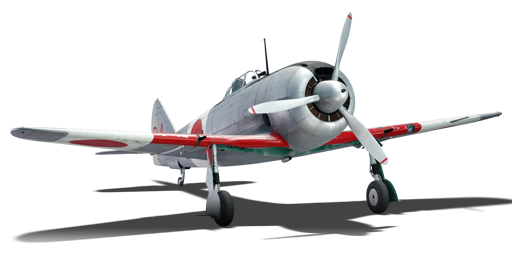




Ki-44-I 'Red 34' belonged to the 47th Sentai, which originally started as the 47th (Independent) Chutai 'Kawasemi Buntai' as the first unit equipped with the Ki-44. Operating the prototypes in Indochina, the unit was later recalled to the mainland after the "Doolittle Raid" in 1942, which exposed vulnerabilities in Japan's home defence and the inadequacy of the Ki-27 reserves. The experienced Chutai was upgraded to a Sentai in 1943 and stationed at Narimasu Air Base with three Chutais under its command. Like many other Ki-44s, they were primarily tasked with homeland defence against B-29s, a role for which the Ki-44 was not ideally suited, though the 47th still managed to shoot down several B-29s. As the war worsened, the 47th (along with other air groups) incorporated a "Shinten Unit", an additional squadron of four pilots employing kamikaze tactics with stripped Ki-44s to ram bombers out of the sky. Around April 1945, the 47th was also equipped with Ki-84s for their standard squadrons, which were used in tandem with their Ki-44s.
Introduced in Update "Starfighters", the Ki-44 can now fulfil its true purpose in War Thunder, competing with Western aircraft in terms of armament and mobility. The Ki-44 is best suited for Boom-N-Zoom tactics as it lacks the manoeuvrability characteristic of other Japanese fighters, such as the lighter Ki-43 and Navy A6M. Despite its comparative lack of manoeuvrability, it remains competitive against Western planes and outpaces its Japanese equivalents.
flaps
flaps
flaps
brake
| Belt | Belt filling | Armor penetration (mm) at a distance: | |||||
|---|---|---|---|---|---|---|---|
| 10 m | 100 m | 500 m | 1000 m | 1500 m | 2000 m | ||
| AP-T/AP/HEF-I | 21 | 19 | 13 | 7 | 4 | 3 | |
| AP-T/AP/HEF-I | 21 | 19 | 13 | 7 | 4 | 3 | |
| AP-T/HEF-I/HEF-I/HEF-I | 21 | 19 | 13 | 7 | 4 | 3 | |
| AP-T/AP/AP-T | 21 | 19 | 13 | 7 | 4 | 3 | |
| AP/HEF-I/HEF-I/HEF-I | 21 | 19 | 13 | 7 | 4 | 3 | |
| Belt | Belt filling | Armor penetration (mm) at a distance: | |||||
|---|---|---|---|---|---|---|---|
| 10 m | 100 m | 500 m | 1000 m | 1500 m | 2000 m | ||
| T/AP/IAI/AP/I | 13 | 12 | 7 | 3 | 2 | 0 | |
| T/AP/IAI/AP | 13 | 12 | 7 | 3 | 2 | 0 | |
| T/T/T/AP | 13 | 12 | 7 | 3 | 2 | 0 | |
| I/AP/AP/AP/IAI | 13 | 12 | 7 | 3 | 2 | 0 | |







 2 x (40 / 105 / 195) %
2 x (40 / 105 / 195) % 
 2 x 118 %
2 x 118 % 

Flight performance | |
|---|---|
Survivability |
|---|
Weaponry |
|---|